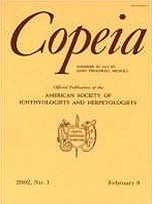The current literature reports divergent conclusions on the patterns of body size change in island snakes. I reviewed body size data in the published literature and tested the effects of island biogeographic variables on such changes. I found that none of the physiographic variables (island area, island age, distance to mainland, and latitude) was important in determining changes in size of island snakes. Additionally, a current hypothesis of phylogenetic history had no effect on changes in body size. Rather, the proportional change in body size of island snakes was bimodal, consistent with a diet alteration hypothesis that suggests that snake body size is principally influenced by prey size and that island snakes encounter prey that are larger or smaller in size compared with those on the mainland. Also, snakes that became small on islands did so to a relatively greater degree than those that became large. Ontogenetic changes in foraging strategies appeared to explain this pattern. The distribution of gigantic and dwarf snake populations on islands differed significantly between the families Viperidae and Colubridae. The foraging style of colubrids, specifically nest-robbing behavior, may predispose these species to become larger on islands. Numerous colubrid (and one elapid) species attain their largest sizes on islands that also support nesting seabirds, whereas dwarfed populations consume mainly squamates.
How to translate text using browser tools
1 February 2003
Body Size Evolution in Snakes: Evidence from Island Populations
Scott M. Boback
ACCESS THE FULL ARTICLE





